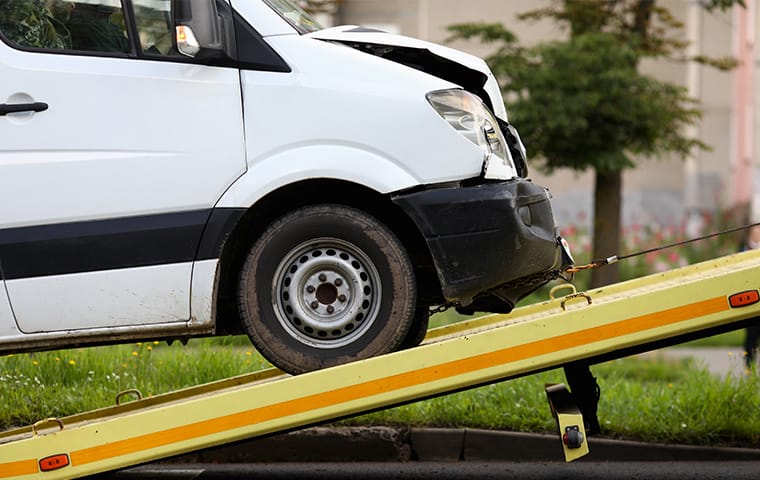Even the best, most experienced team of drivers is susceptible to accidents. The road can be a dangerous place, especially when your drivers are working long hours. And with more and more people out on the road catching up on postponed travel, the likelihood of an accident has only increased.
As a fleet manager, the best thing you can do is be prepared in the event of a fleet accident. You want to keep your fleet safe, but you also want to avoid both the obvious and hidden costs of accidents.
Knowing the true cost and what is a fleet accident helps ensure your team is ready in case of an emergency. Make sure your fleet is prepared in the event of an accident by knowing about these costs.
What is a Fleet Accident?
Like any vehicular accident, fleet accidents are any event that results in damage to your fleet or is caused by your fleet. Fleet accidents vary in severity and cause. Whether it’s on the highway or a parking lot, or was the fault of your driver or not, there are costs your fleet should be aware of in the wake of your fleet accident.
Primary Costs of Your Fleet Accident
These are the main costs you’d initially associate with a fleet accident in its aftermath. Some costs to consider include what repairs are needed for your fleet, if there are costs associated with injuries, and any additional insurance costs. Keep in mind that depending on the accident and your insurance, you might see an increase in your insurance premium in the future. Make sure to factor in this expected cost along with the initial repairs.
Hidden Costs of Your Fleet Accident
After your business has paid for and calculated the initial cost of the fleet accident, it’s important to pay attention to other hidden costs you’ll face in its wake. While not all of them are monetary, they can cost your business in other ways.
Morale Issues
Accidents can be very traumatic, especially when your job depends on you being on the road. Depending on the accident, your driver might not be willing to immediately return to work, even though they physically can. Make sure to support your fleet during this time. Drivers will undoubtedly note how you take care of drivers immediately following an accident. Low-employee morale can cause many other issues, including higher employee stress levels and high turnover rates, which in turn cause recruitment and retention costs.
These morale issues can also leak into the clients you service. Depending on the severity of your fleet accident, there could be public relations issues stemming from the event. If clients voice their safety concerns about your fleet, be ready to vocalize the steps your fleet is taking to promote safety out on the road and while servicing clients like them.
Staffing Issues
Your drivers are the backbone of your business. And when one of them is unable to work and complete their routes due to an injury, the repercussions will be felt throughout your company.
Maybe another driver will have to fill in to complete the additional routes. This will likely be the case if the vehicle is out of commission and you don’t have a backup.
Or, if you do have an additional vehicle, you might have to add another driver to your fleet. This can result in extra costs like overtime pay and the time and resources your team uses to recruit another driver to your team.
Overall Employee Time
The time your drivers and office employees spend dealing with the aftermath of an accident is time they could have spent elsewhere and of course, costs your fleet money. Your office employees will have to spend time filing additional paperwork for insurance purposes. This may result in needing to pay overtime to office employees. Plus, if you have to hire more fleet drivers, the time interviewing and researching applicants is another time suck for your current employees.
How to Be Prepared for a Fleet Accident
As a fleet manager, the best thing to do is be prepared in the event of an accident. There are several ways you can make sure your fleet is well trained and has the equipment they need to keep them safe on the road.
First and foremost, make sure your team is trained and coached on safety best practices on their roads. Promote safe driving practices as a priority for your business, and reward your employees when they demonstrate these practices.
Of course, your drivers are experienced, and there’s always a chance that just because they are practicing safe driving practices, they still might be hit by a distracted driver or subject to inclement weather.
In that case, having access to tools that support your fleet drivers and help keep them safe is invaluable. Ensuring your drivers have dashcams available reporting on their safe driving practices helps your team monitor what drivers are driving safe while out on their routes. It also allows you to monitor those who are being reckless, so you can take appropriate measures to curb these behaviors.
Plus, having a dashcam allows drivers to prove when accidents are not their fault. This makes insurance matters a lot easier to deal with and ensures that your fleet accident won’t incur the higher costs you’d get if your driver was at fault.
Driver safety should always be a top priority for your fleet business. These drivers are invaluable assets to your company, and you want to make sure they are staying safe while working hard as members of your fleet.
For more fleet driver safety tips, and to learn more about how Azuga can help your fleet encourage safe driving practices, schedule a demo. Our software solutions are available to help in a fleet accident.








